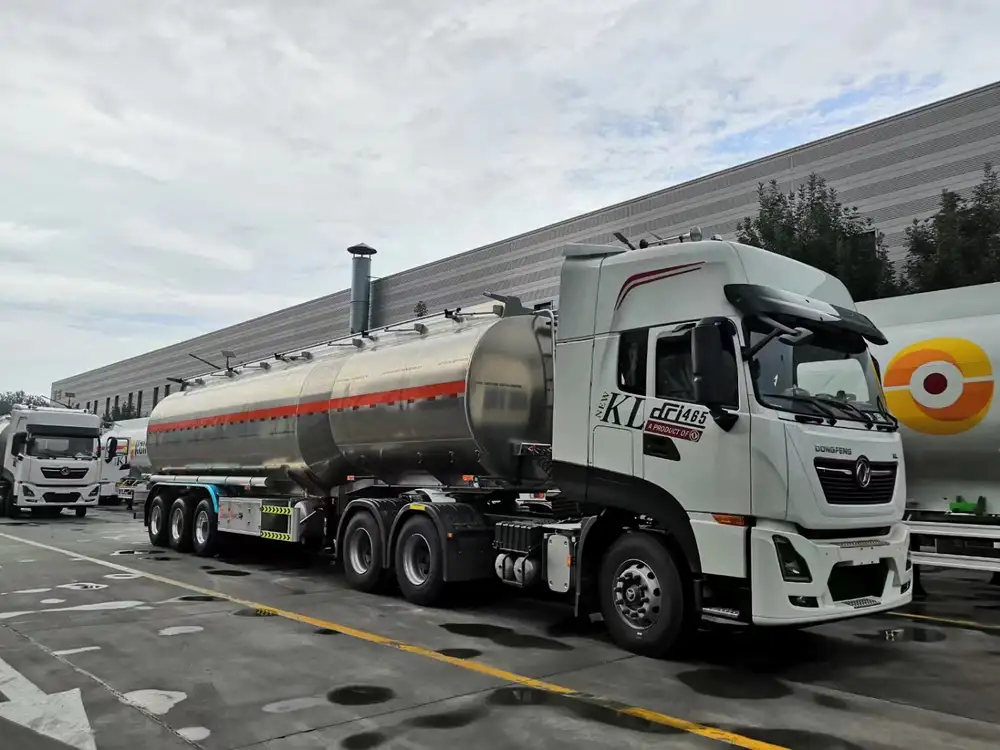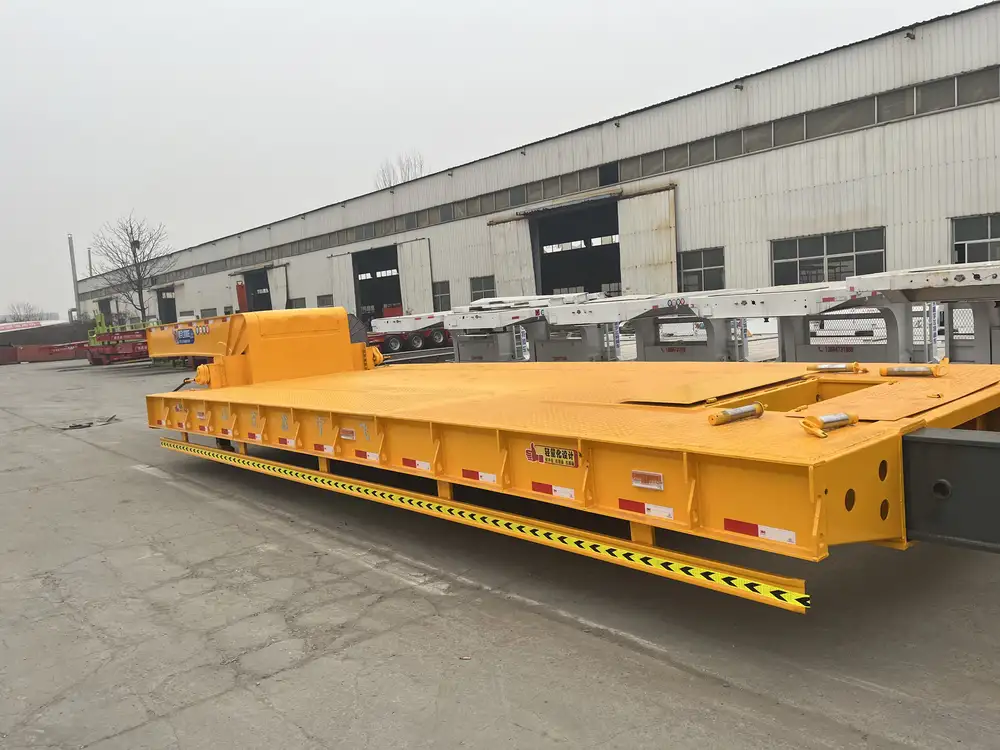Unloading a portable tanker trailer is a critical process that requires a thorough understanding of safety protocols, equipment operations, and handling techniques. In this article, we delve deeply into the best practices, equipment, and safety measures necessary for effective unloading. This guide serves as a detailed framework for operators and personnel involved in the unloading of portable tanker trailers, ensuring smooth operations while prioritizing safety.
Understanding the Components of a Portable Tanker Trailer
Overview of Portable Tanker Trailers
Portable tanker trailers are specialized vehicles designed to transport liquids, such as fuel, chemicals, and food products. Their sturdy construction allows them to safely hold various substances under various conditions. Understanding their design is crucial for safe unloading.
| Component | Function |
|---|---|
| Tank | Holds the liquid being transported |
| Pump | Transfers liquid from the tank to the storage container |
| Valves | Control the flow of liquid during unloading |
| Hoses and Connectors | Facilitate the transfer of liquid to the discharge point |
| Safety Features | Include relief valves and pressure gauges to prevent overpressure |

Importance of Proper Unloading Techniques
The unloading process can significantly affect the integrity of the cargo, the safety of personnel, and the efficiency of operations. Improper unloading may lead to spills, accidents, and equipment damage. Understanding and following the correct techniques is paramount.
Preparation Before Unloading
Conducting a Risk Assessment
Before initiating the unloading process, a thorough risk assessment should be performed. This includes identifying potential hazards, such as:
- Spills and Leaks: Always check for leaks in the tank or hoses.
- Environmental Concerns: Assess the unloading area for proper drainage and environmental safety.
- Personnel Safety: Ensure that all personnel are equipped with appropriate safety gear, including gloves, goggles, and spill kits.

Equipment Inspection Checklist
Performing a meticulous inspection of the unloading equipment is essential for safe operations. Below is a checklist to guide personnel through this critical step:
| Equipment | Inspection Steps |
|---|---|
| Tank Trailer | Check for dents, corrosion, or visible leaks |
| Pumps | Ensure pumps are working correctly |
| Hoses | Inspect for wear and tear; ensure there are no cracks |
| Valves | Test that all valves open and close correctly |
| Safety Equipment | Verify that all safety devices are functional |
Necessary Tools and Gear
Ensure that you have the following tools and gear readily available before you start unloading:
- Personal Protective Equipment (PPE): Gloves, goggles, and aprons
- Spill response kits: Just in case of an emergency
- Wrenches and pliers: For securing hoses and fittings
- Flow meters: To monitor the quantity being unloaded
Step-by-Step Guide to Unloading a Portable Tanker Trailer

Step 1: Positioning the Trailer
Correct positioning of the portable tanker trailer is crucial for the unloading process. Follow these guidelines:
- Level Ground: Ensure the trailer is parked on stable, level ground to prevent tipping.
- Secure Brakes: Engage the trailer’s brakes and set wheel chocks to prevent movement.
- Safety Signage: Place warning signs around the unloading area to alert nearby personnel.
Step 2: Connecting the Hoses
The next step is to connect the discharge hoses to the trailer’s valve. Use the following method:
- Inspect Hoses: Ensure both ends of the hoses are free from damage.
- Attach Hoses: Securely connect one end of the hose to the tank valve and the other to the storage container.
- Check for Leaks: Inspect connections for any signs of leakage before proceeding.
Step 3: Open the Valves
Adjust the valves carefully to allow for the safe transfer of liquid. Take these steps:
- Main Valve: Gradually open the main valve.
- Drain Valve: Open the drain valve slowly to control the flow.
- Monitor Pressure: Keep an eye on pressure gauges; continuous monitoring is essential.

Step 4: Activate the Pump
- Power Up the Pump: Ensure that the pump is correctly set up and powered. Follow the manufacturer’s instructions.
- Flow Rate Adjustment: Adjust the flow rate based on the storage container capacity.
- Continuous Monitoring: Always observe the process for irregularities, including abnormal noises or fluctuations in pressure.
Step 5: Monitoring the Unloading Process
During the unloading process, close attention is paramount. Consider the following:
- Flow Monitoring: Regularly check the flow meter to ensure the unloading is proceeding as intended.
- Visual Inspections: Look for leaks or any signs of overflow in the storage container.
- Communication: Maintain clear communication among the team to ensure everyone is aware of the unfolding process.
Step 6: Completing the Unloading
Once unloading is complete:
- Shut Down the Pump: Turn off the pump, ensuring it’s completely stopped.
- Close Valves: Securely close all valves before disconnecting hoses.
- Detach Hoses: Remove hoses carefully to prevent spillage.

Post-Unloading Procedures
Clean-Up and Maintenance
A proper clean-up is critical to ensure ongoing safety and efficiency:
- Hose Maintenance: Clean hoses with approved solvents to remove residual liquids.
- Storage Procedures: Store hoses and tools in designated places.
- Environmental Check: Inspect the area for any spills or leaks; address them immediately.
Documentation
Document the unloading process for future reference. Key aspects to record include:
- Amount unloaded.
- Any incidents or anomalies observed.
- Equipment and personnel involved.

Safety Considerations During Unloading
Emergency Preparedness
Prepare for unexpected situations by ensuring that the following measures are in place:
- Emergency Plan: An emergency response plan should be established and reviewed regularly.
- Training: Regularly train personnel on emergency procedures, including spill response and fire safety.
Best Practices to Follow
- Constant Vigilance: Remain alert during all stages of unloading.
- Communication: Maintain open lines of communication among all team members involved in the process.
- Regular Inspections: Schedule periodic inspections of both equipment and procedures to ensure compliance and identify areas for improvement.

Conclusion
Unloading a portable tanker trailer demands attention to detail, rigorous safety practices, and thorough planning. By following the steps outlined in this guide, operators can achieve efficient unloading while minimizing risks associated with spills, accidents, or equipment failures. Effective training, communication, and adherence to safety protocols will vastly improve operational efficiency in any unloading scenario.
This structured approach not only ensures that the unloading process is executed flawlessly but also underscores the importance of safety and accountability in handling hazardous materials. By focusing on these core principles, organizations can foster a culture of safety and efficiency that benefits both employees and the environment.



